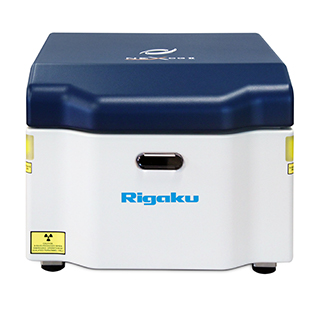NEX CG II for Petroleum Applications
Measure & Monitor Sulfur, Chlorine, Vanadium, Iron, Nickel, Lead, Manganese, and More
Key Advantages & Features
NEX CG II is an all-in-one petroleum analyzer offering fast, reliable measuring and monitoring for ultra-low sulfur applications and much more. It is an ideal tool for measuring ultra-low and trace element concentrations up to percent levels.
- Analysis of ultra-low sulfur diesel (ULSD) per ASTM D7220
- Analysis of ultra-low sulfur in gasoline per U.S. EPA Tier 3 Standards
- Ultra-low chlorine in crude oil per ASTM D4929 Part C
- Analysis of lead in gasoline per ASTM D5059
- Analysis of manganese in gasoline per ASTM D5059 Part D
- Analysis of metals in crudes and residual fuels per ASTM D852

Video
Additional Notes
- Product Overview
- Application Notes
Multi-element Versatility & Low Limits of Detection
Rigaku NEX CG II is a powerful, second-generation benchtop EDXRF offering exceptional versatility. It provides non-destructive analysis of sodium to uranium in almost any matrix and is an ideal tool for measuring ultra-low and trace element concentrations up to percent levels. NEX CG II is well suited for ASTM and international compliance for ultra-low sulfur applications, such as testing ultra-low sulfur in diesel (ULSD) and meeting Tier 3 gasoline requirements per ASTM D7220. NEX CG II also delivers the lowest chlorine detection limits for ASTM D4929 compliance using Part C methodology and easily meets ASTM D5059 Parts A and C compliance using the Bi internal standard method to measure lead in gasoline samples.
Unique Cartesian Geometry Optical Kernel for Enhanced Elemental Analysis
Many technologies are available for measuring sulfur and other elements in petroleum products, but what makes NEX CG II unique is its advanced three-dimensional (3D) Cartesian Geometry optical kernel. Unlike conventional energy dispersive X-ray fluorescence (EDXRF) spectrometers, NEX CG II is an indirect excitation system using secondary targets rather than tube filters. Monochromatic and polarized excitation from secondary targets vastly improves detection limits for elements in highly scattering matrices like water, hydrocarbons, and biological materials. Secondary target excitation in full 90° Cartesian Geometry eliminates background noise, and as a result, NEX CG II brings a new level of analytical sensitivity to XRF technology. Users can measure ultra-low and trace element concentrations, even in challenging sample types.
